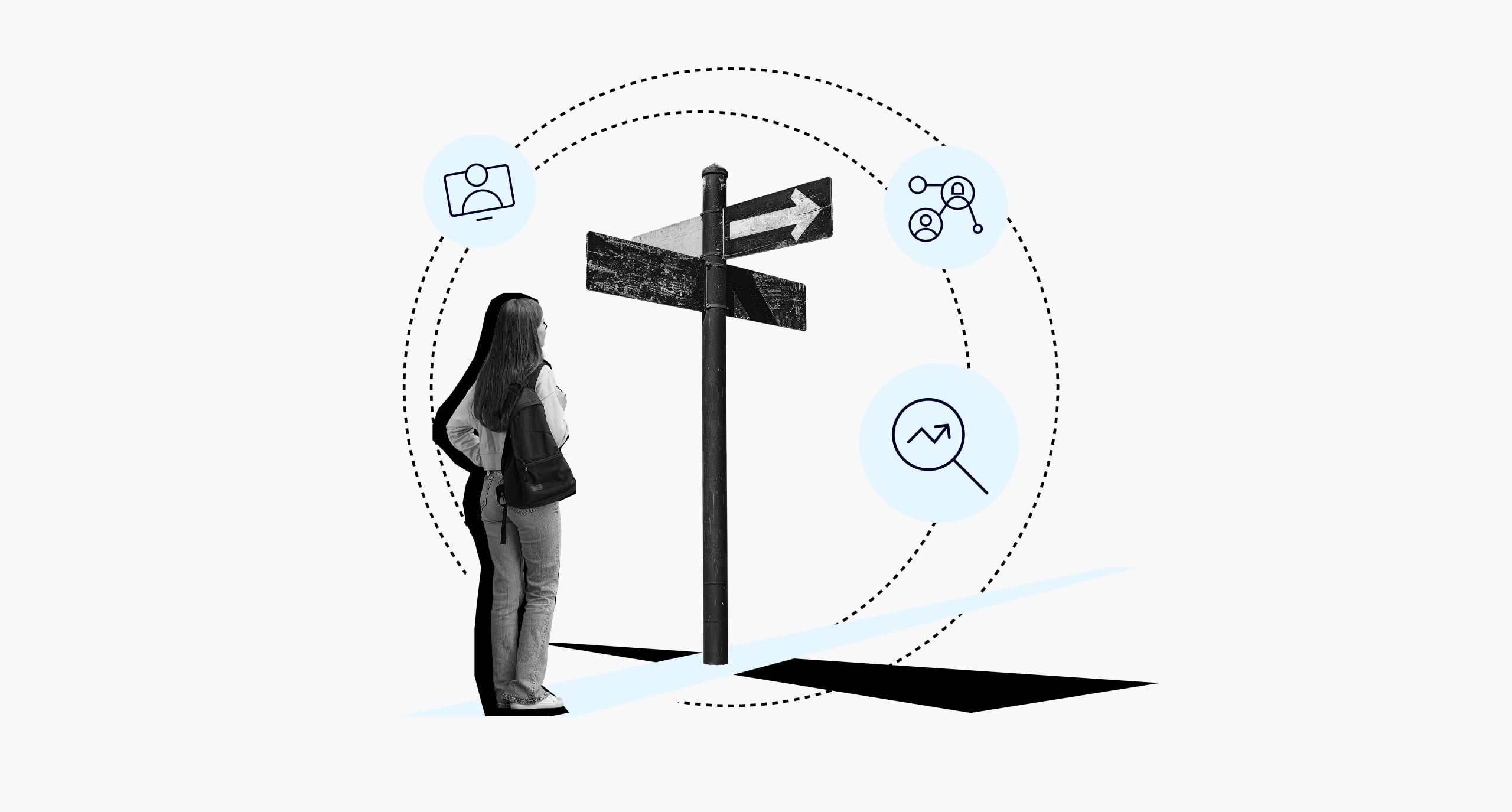Let’s talk about female leadership in business. The big-picture signals are consistent: McKinsey & Lean In still see the “broken rung” throttling upward mobility, WEF says parity gains are fragile, and HBR explains why—second-generation bias wired into roles, feedback and visibility. On the upside, IE Insights and Brand Finance’s Global Soft Power Index point to current wins. “Feminine leadership traits”—empathy, collaboration, ethical clarity—track with trust, stability and long-term performance.
Throughout this article, we’ll be assessing the evidence of strength in female leadership alongside insights from IE Women’s Pivot with Purpose: Leading & Thriving in the Digital Age. Expect straight talk and usable moves for business contexts—resilience as a practice, networks as a growth strategy, purpose as your operating system—plus sharp quotes from the panel to show how women actually pivot, get seen, and lead with measurable impact.
What are the benefits of female leadership?
Women in leadership bring fresh perspective, emotional intelligence and collaborative strength to organizations. Their inclusive approach often fosters better communication, innovation and team cohesion—qualities that matter in complex, digital workplaces. Studies also show that companies with more women in senior roles tend to outperform peers on profitability and social impact, suggesting diverse leadership isn’t only fair—it’s strategic.
Yet structural and cultural barriers persist. Gender bias, unequal pay and underrepresentation in certain sectors still shape how women are perceived and promoted. Many leaders navigate a double bind: be empathetic but decisive, confident but not “too assertive.” As one panelist put it, “Sometimes metrics win over meaning,” and the unwritten rules penalize women differently.
This tension fuels self-doubt and impostor syndrome—even among top performers.
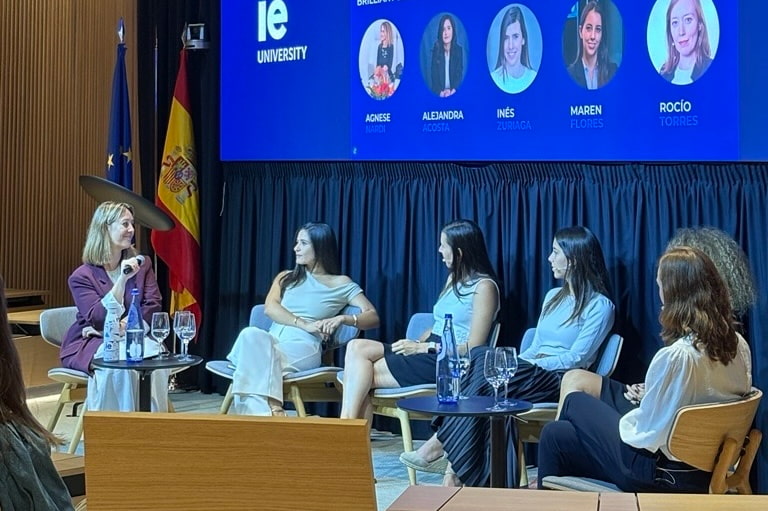
The solution lies in the system, not the individual. Progress depends on sponsorship and mentorship, pay transparency and evaluation frameworks that reward performance over stereotype. As Inés Zuriaga noted, progress is “about asking for help early and often”—and getting the institutional backing to make that help actionable.
Why is female leadership important?
Women in leadership roles deliver transformation, not just representation. Diverse decision-making challenges assumptions, reduces blind spots and strengthens strategy. The business case is durable: better problem-solving, more innovation and, over time, stronger governance and customer understanding.
Leadership styles many women bring—collaboration, empathy, communication—tend to build psychologically safe teams. That shows up in higher engagement, creativity and retention, which compounds into sustainable growth. “The best opportunities don’t always come from portals; they come from people,” Agnese Nardi said.
This underscores how inclusive leaders catalyze networks that move work forward.
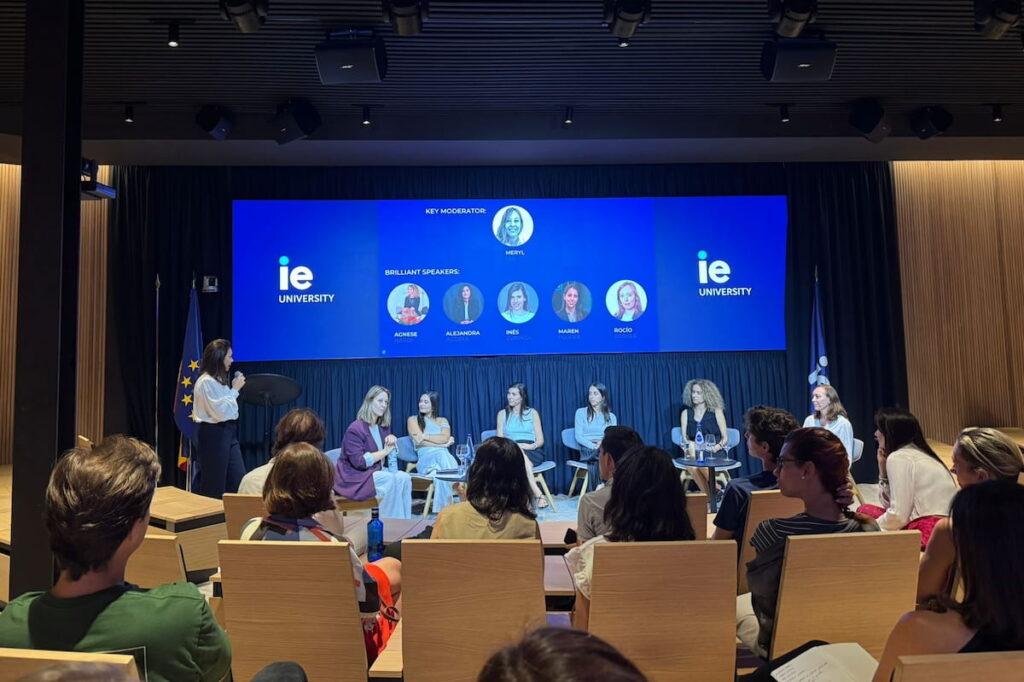
There’s also a social dividend. Visible female leaders become role models who help dismantle stereotypes and expand ambition across genders. Their adaptability in fast-changing environments equips organizations to respond confidently to uncertainty—linking culture, performance and long-term resilience.
What is the biggest challenge as a female leader?
The hardest part often isn’t skill or ambition—it’s the identity shift of being seen (and seeing yourself) as a leader. Traditional interventions fix the pipeline (training, slates, targets) but miss the process of internalizing authority and being recognized as legitimate in the role. When leadership is still coded as “decisive, dominant, always-on,” women’s potential can be undervalued or mislabeled as a “lack of presence.”
Subtle, second-generation bias compounds this: who gets visibility, which behaviors get rewarded, how feedback is framed. Maren Flores Grawe captured the pivot from consulting to corporate strategy: “I wanted to see the real impact… now I can generate much more from inside.”
That recognition—by sponsors, clients, peers—helps convert capability into perceived leadership.
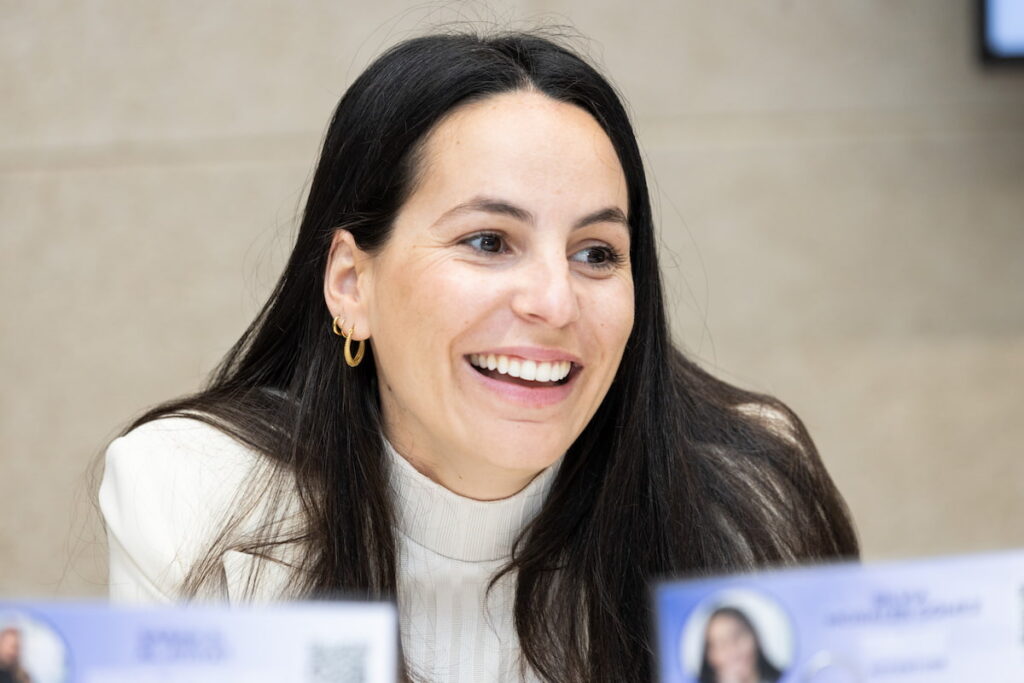
What helps: educate everyone about bias, create safe “identity workspaces” to test style, and tune evaluations so competence isn’t penalized for not fitting a stereotype. Anchor growth in purpose, not performance theater. Purpose reduces the exhausting calculus of likability vs. authority and frees leaders to act with clarity.
What factors limit women’s participation in leadership?
IE Insights research by Gabriela Salinas, The Gender Traits of Modern Leadership, points to a consistent shift: today’s most effective leaders embody traits once labeled feminine over traditional command-and-control styles. These traits include collaboration, empathy, flexibility, sincerity. Global analyses from Brand Finance, MSCI and Nordea echo the trend: countries and companies led by diverse teams often outperform on trust, governance and long-term results.
This aligns with Joseph Nye’s concept of soft power—leading by attraction rather than coercion—and Simon Sinek’s idea that strong leaders make others feel safe. These qualities aren’t gendered; they’re adaptive responses to complex, interdependent systems that reward those who can build trust and mobilize collective effort.
Beyond the usual barriers like pay gaps or representation, three structural forces still limit women’s progression.

1. Biased promotion criteria that favor narrow leadership behaviors.
2. Visibility bottlenecks that restrict access to stretch roles.
3. Feedback asymmetry, where the same behavior reads as strategic in men but abrasive in women.
Panelists shared pragmatic counter-moves: network early—“The right conversation can change your destiny faster than hundreds of applications,” said Agnese Nardi; build your story before your job search, advised Alejandra Acosta; and prioritize progress over perfection—“Pivots take months, sometimes years,” noted Inés Zuriaga.
What does feminine leadership look like?
Think balance, not binaries. Effective leaders—of any gender—blend traditionally feminine and masculine qualities. Practical markers you can surface as scannable proof points:
1. Empathy & inclusion
Higher engagement and better ideas in the room.
2. Collaboration & communication
Faster alignment, fewer costly reworks.
3. Flexibility & intuition
Quicker pivots under uncertainty.
4. Vulnerability with standards
Psychological safety without lowering the bar.
How to pivot with purpose?
Careers aren’t linear. “Change, reinvention and transition have become the new normal,” said Ana Trebolle. Pivots aren’t setbacks—they’re “opportunities to realign with your values,” as moderator Inés Zuriaga framed it. The panel—Agnese Nardi, Alejandra Acosta, Rocío Torres, Maren Flores Grawe and Inés herself—showed how purpose, curiosity and timing drive every bold move.
1. Translate your past
Finance to sustainability metrics (Rocío); consulting to corporate strategy (Maren); activism to social-impact consulting (Alejandra).
2. Use a trigger test
“The Monday-morning test—ten Mondays unmotivated? Move.” —Inés
3. Be vocal
“Who’s going to help you if you don’t tell people you need support?” —Agnese
4. Practice, don’t panic
“It’s not that I can’t do it—I just haven’t practiced enough yet.” —Alejandra
What to do next
1. Build your circle of mentors, role models and peers; ask early, ask often.
2. Write your purpose in one sentence.
3. Map the strengths you’re carrying forward.
4. Design a six-month learning sprint—focus on progress, not perfection.
Is IE Business School the right platform for your pivot?
If you’re ready to accelerate, IE offers distinct paths:
Master in Management: for early-career profiles exploring strategy/analytics/innovation to find their lane.
Master in Management & Strategy: for those targeting corporate strategy, product or transformation roles.
International MBA: for career changers who want strategic range and live company challenges.
What truly sets IE Business School apart is the ecosystem: IE Women programming, events like Pivot with Purpose, and cross-school networks that connect you with mentors, role models, and real platforms to test your story in public. That support matters when you’re navigating visibility and the double bind—because practice and feedback, not theory, turn potential into perceived leadership. If your next chapter is about reinvention with impact, shortlist your program and plug into upcoming IE Women events to pressure-test your narrative with alumni and industry guests. The goal isn’t just a new title—it’s building a durable leadership identity you can carry across roles, sectors, and cycles.
Unlock your potential with IE Business School
Start your journey to leadership with our Master in Management, Master in Management & Strategy and International MBA.
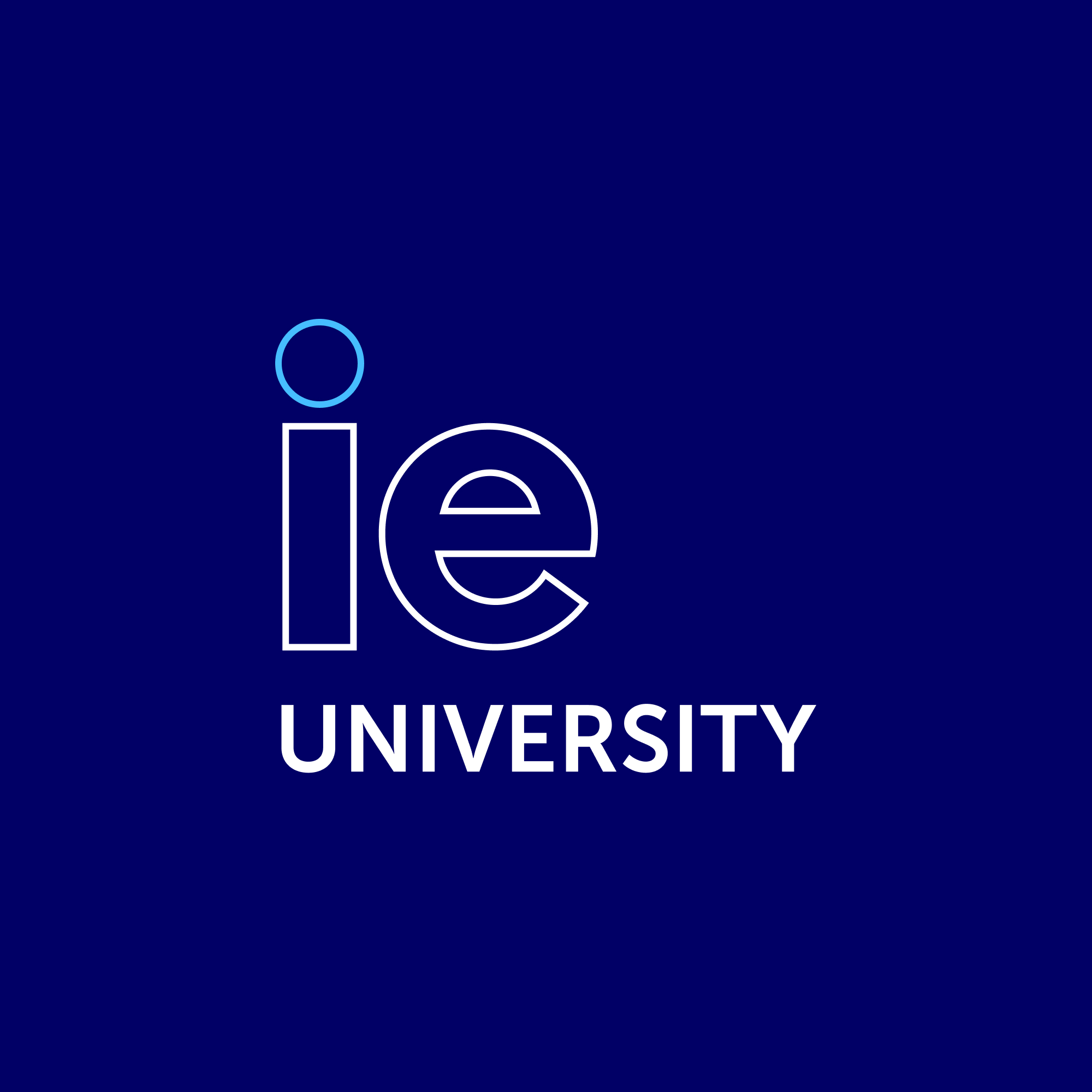
Benjamin is the editor of Uncover IE. His writing is featured in the LAMDA Verse and Prose Anthology Vol. 19, The Primer and Moonflake Press. Benjamin provided translation for “FalseStuff: La Muerte de las Musas”, winner of Best Theatre Show at the Max Awards 2024.
Benjamin was shortlisted for the Bristol Old Vic Open Sessions 2016 and the Alpine Fellowship Writing Prize 2023.

